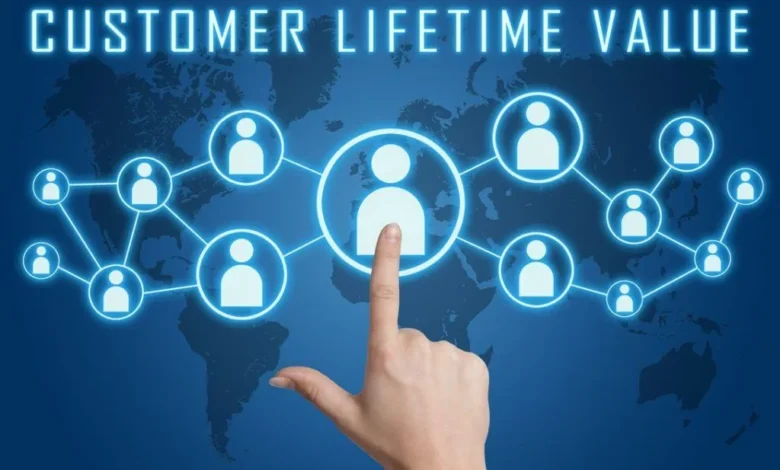Why Calculating Customer Lifetime Value is Crucial for Business Growth

Understanding and calculating Customer Lifetime Value (CLV or LTV) is pivotal for any business looking to thrive and expand. CLV provides a metric that represents the total revenue a company can expect from a single customer account throughout their relationship with the company. Mastering this calculation can guide key business decisions in marketing, sales, product development, and customer service, maximizing profitability and fostering enduring customer relationships. If you’re looking to deepen your understanding, learning how to calculate customer lifetime value is an essential first step.
In this blog, we will explore why CLV is so essential, how it influences business decisions, and the direct benefits it provides.
Understanding Customer Lifetime Value
Customer Lifetime Value (CLV) is a predictive financial metric that represents the total amount of money a customer is expected to spend in your business, or on your products, during their lifetime. This critical metric helps businesses make informed decisions about how much money to invest in acquiring new customers and retaining existing ones. Calculating CLV involves estimating the average purchase value, the number of transactions, the customer relationship’s lifespan, and the cost of serving the customer. Knowing this value allows companies to determine the net profit attributed to the entire future relationship with a customer.
1. Strategic Decision Making
a. Marketing Investment
CLV is instrumental in shaping marketing strategies. By understanding the lifetime value of different customer segments, businesses can tailor their marketing efforts to target the most profitable groups more effectively. This helps in allocating marketing budgets more efficiently, ensuring that investments are made where they are likely to yield the highest returns.
For instance, if customers acquired through a particular channel have a higher CLV, a business might decide to invest more in that channel to maximize its profitable customer base.
b. Customer Acquisition Costs
CLV directly influences decisions regarding Customer Acquisition Cost (CAC). A fundamental rule of thumb for a sustainable business model is that the CLV should be significantly higher than the CAC. Typically, businesses aim for a CLV to CAC ratio of at least 3:1. Knowing the CLV helps businesses set acceptable acquisition costs and optimize their spending on marketing and sales efforts.
c. Product Development and Customer Service
Understanding the long-term value of customers can also guide decisions in product development and customer service. Businesses are more likely to invest in improvements and features that cater to high-value customers, ensuring that these customers receive the attention and service that will keep them engaged over time.
2. Enhancing Customer Retention
CLV is closely linked to customer retention strategies. Companies with a clear understanding of their customer’s lifetime value are better equipped to implement effective retention programs. Retaining customers is often more cost-effective than acquiring new ones, and increasing customer retention rates by just 5% can increase profits by 25% to 95%, according to research by Bain & Company.
Retention strategies might include loyalty programs, personalized communications, and regular engagement initiatives designed to enhance the customer experience and extend the customer lifecycle.
3. Predicting Future Revenue
Calculating CLV provides businesses with insights into future revenue streams, allowing for more accurate forecasting and planning. By estimating how much revenue a customer will generate, companies can better manage their resources, plan their growth strategy, and make informed decisions about potential investments and expansions.
4. Improving Customer Segmentation
CLV helps in refining customer segmentation by identifying which segments are the most valuable over time. This allows businesses to create specialized offers and communications that cater to the needs and behaviors of high-value segments, thereby increasing engagement and loyalty.
For example, a company might discover through CLV analysis that customers who purchase a specific type of product tend to have a higher lifetime value. This insight could lead to more targeted marketing efforts aimed at promoting that product to similar customer profiles.
5. Enhancing Personalization
With detailed knowledge of a customer’s lifetime value, businesses can tailor their interactions to match the customer’s importance. This can range from personalized emails to offering exclusive services or priority customer support. Personalization not only enhances the customer experience but also increases the likelihood of upsells and repeat business.
6. Supporting Sustainable Growth
Ultimately, understanding and optimizing for CLV supports sustainable growth. By focusing on acquiring and retaining customers who offer the most value over their lifecycles, businesses can ensure a more stable and predictable cash flow. This approach supports long-term strategic planning and resource allocation, making the business more resilient and adaptable to market changes.
7. Financial Forecasting and Growth Planning
CLV is a cornerstone metric for financial forecasting and strategic growth planning. By predicting how much revenue a customer will generate over their lifetime, businesses can make more informed decisions regarding budget allocation, resource planning, and growth strategies.
a. Revenue Projections
Accurate CLV calculations enable more precise revenue forecasting. Businesses can estimate future revenue more reliably, which is crucial for long-term planning and investment.
b. Resource Allocation
Understanding the potential revenue from different customer segments allows businesses to allocate resources more effectively, be it in marketing, sales, product development, or customer service.
8. Optimizing Product and Service Offerings
Understanding CLV helps businesses tailor their product and service offerings to meet the needs of their most valuable customers. This might involve expanding product lines, enhancing service offerings, or discontinuing products that do not contribute positively to customer value.
a. Product Development
CLV insights can direct product development efforts toward innovations that cater to the most profitable customer segments. This targeted approach not only optimizes resource allocation but also ensures that new products are likely to succeed in the marketplace.
b. Customer Feedback Integration
Incorporating feedback from high-value customers into the product development process can lead to improvements that directly address their needs and preferences, further increasing CLV.
Conclusion
Calculating Customer Lifetime Value is not just a metric—it’s a comprehensive strategy that underpins every aspect of a business aiming for growth and sustainability. CLV provides the insights needed to make smarter investments in customer acquisition, develop more effective marketing strategies, enhance product offerings, and deliver exceptional customer service. By focusing on maximizing the lifetime value of each customer, businesses can optimize their profitability and pave the way for long-term success.





